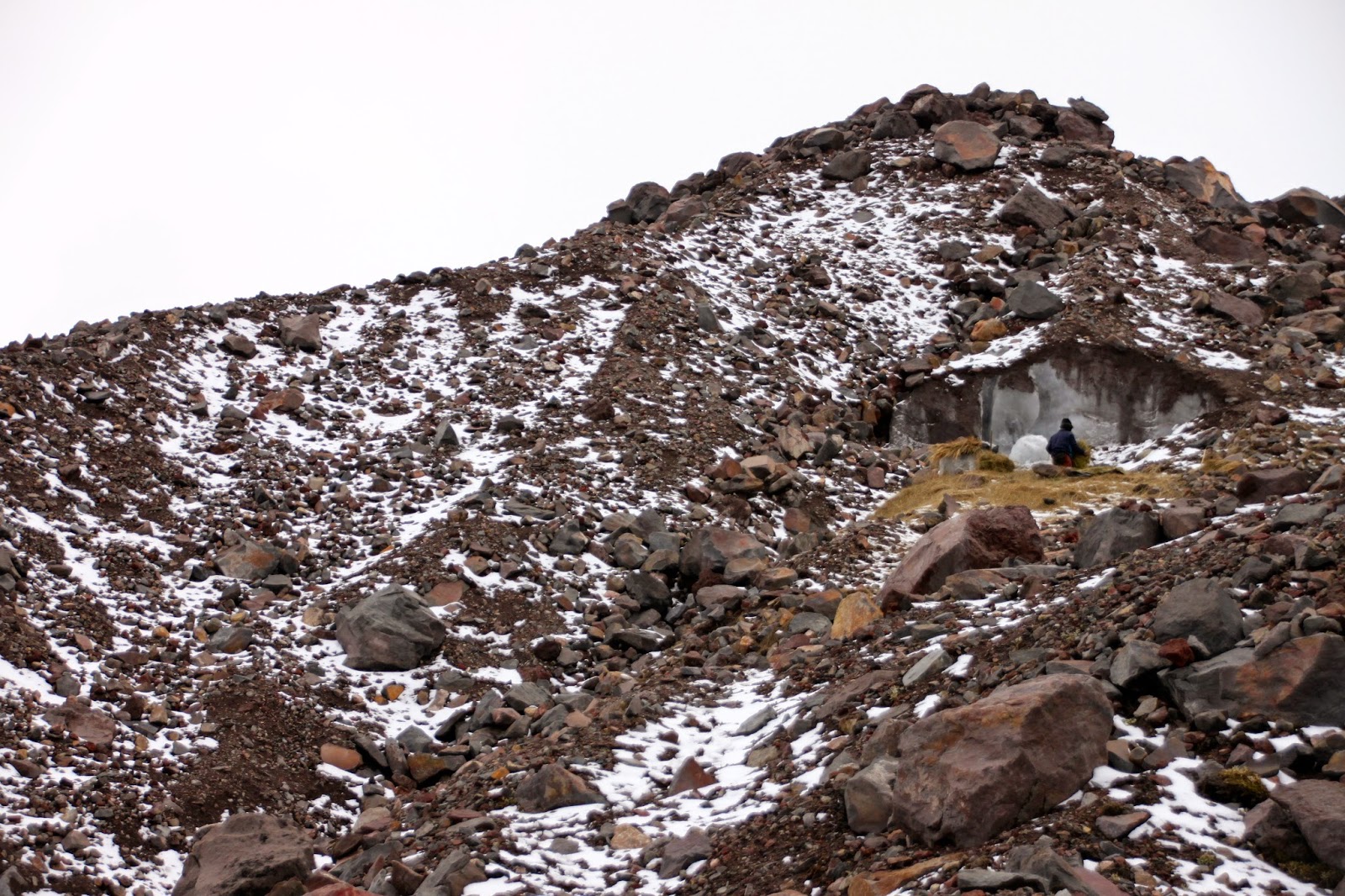Living at the foot of a volcano, it is necessary to climb
the volcano at least once…Now before you think I have become some mountain
woman that climbs the tallest volcano in Ecuador in my spare time… let me
preface this post with the fact that this was the most physically humbling
experience I have yet encountered.
The name of our volcano, Chimborazo, means “Ice Man” in
Quitchua. The name stems from the majestic snow cap that tops the volcano and
the healing powers that were believed to come from the ice. Looking back 50
years, this healing ice was an incredibly important part of the culture of the
communities surrounding Chimborazo. The men that would harvest this ice were
called hielederos and multiple times
a week they would climb Chimborazo (barefoot I may add) with their donkeys to
cut the ice and then bring it down to the people. Over time, the danger and
difficulty of the profession have widdled the number of hielederos down to one, Baltazar. Just by chance, Balazar happens
to live in Pulingui, and we were lucky enough to get to accompany him on one of
his trips.
Starting at the foot of the volcano, we met Baltazar who was
cutting grass before he began his hike and using it to make blankets and ropes
to keep the ice cold on the journey back down the volcano. We then embarked on
our 3 hour trek up the volcano. I think I should mention that Baltazar made us
leave before him because it only takes this five foot, 62 year old man 1 hour
to get up the volcano and it takes us gringos 3 times that…
Those 3 hours were brutal… unlike my last hike in Cajas, our
path was straight up the entire time. Because of the altitude, our guides
required us to stop every 20 minutes to acclimate to the lack of oxygen. We
began our hike at 3000km and finally met Baltazar at 4800km. Besides my glutes
burning and being out breath, the entire time we encountered heavy winds, rain,
snow, and extreme cold… At one point the winds were so strong we had to tie
ourselves to each other so we wouldn’t fall off the volcano (that is when I got
a little nervous).
Once we met Baltazar at the glacier though, he showed us the
technique of ice cutting and how he ties it all up on his donkeys to bring down
to Riobamba. I had no idea that donkeys were that strong or courageous to climb
a steep volcano (so I think we should all have a little more respect for
donkeys… I know I do). We may not have been as quick as the donkeys at
descending Chimborazo, but it sure was a lot faster and easier on the way down.
By the end of our long day I was exhausted (and thankful for more oxygen in
Pulingui).
It just takes meeting Baltazar to realize how weak you are…
The man is on the top of a freezing volcano, chopping ice, and doesn’t even
wear gloves… (he told us that he had given himself to Chimborazo and was no
longer affected by the cold)… I on the other hand had layered on all the
clothing I had, trying to retain some of my body heat and have padding in case
I tumbled down. The saddest thing though, is that most people are like me and no
one is left that is willing to endure the hardships of Baltazar’s job. Even his
sons have realized that the job is too brutal and dangerous for them, leaving
Baltazar as the last hieledero on
Chimborazo…
So, if you are ever in Riobamba, I recommend hurrying to the
little smoothie shop that makes drinks with the healing ice of the Chimborazo,
because this cultural tradition will sadly die with Baltazar. (P.s. I tried a
coconut smoothie and I think the healing powers worked because I feel incredibly
healed).
Lots of love from Ecuador,
Jen










No comments:
Post a Comment